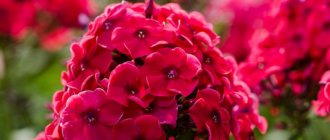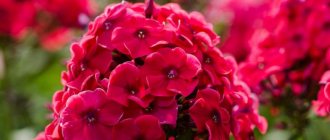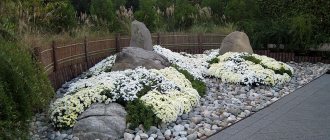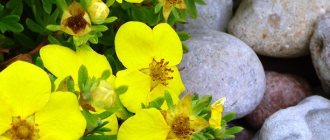Yarrow is a very large genus belonging to the Asteraceae or Compositae family. This genus includes about 150 species. Cut grass or common yarrow (Achillea millefolium) is considered the type species of the genus Yarrow. The name of such a plant comes from the name “Achilles”, this mythical hero healed wounds with the help of yarrow. Due to the many segments of the leaf blade, this plant received such a specific epithet (“mille” - thousand, “folium” - leaf). This plant is widespread throughout Asia and Europe, and it has also been brought to other continents. This culture prefers to grow in the steppe, forest and forest-steppe zones, among shrubs, in sparse forests, in wastelands, along the banks of reservoirs, in meadow steppes, on the edges, along roads, along ravines and on the outskirts of fields. Yarrow is cultivated as a medicinal, ornamental, and also a spicy plant.
Features of yarrow
The herbaceous perennial plant yarrow is rhizomatous and well-leafed. The height of the shoots, erect or slightly curved at the bottom, varies from 0.5 to 0.9 m. The baskets are part of lush corymbose or racemose inflorescences reaching 15 centimeters in diameter. The baskets contain tubular flowers of white or yellow color, as well as short-tongued marginal flowers, which can be painted pink, yellow, white or red. The alternately arranged leaf plates can be pinnately dissected or solid. The fruit is a flattened achene of an ovoid or oblong shape.
Yarrow (medicinal). Medicinal, beneficial properties, uses of yarrow
Botanical description
Achillea is a well-known medicinal plant from the Asteraceae family. It is a perennial and grows everywhere in temperate climates, spreading to arctic latitudes and climbing to highlands. More than 10 species live in Russia, some of them are listed in the Red Book.
The most common is the common yarrow - a herbaceous plant with a creeping root and many dissected large leaves rising from the base of the stems in the form of a rosette. The peduncles are strong, straight, have branches at the ends, and are covered with small stem leaves. In the natural environment, the stems grow up to 70 cm.
The flowers are collected in baskets, and those, in turn, are collected in large inflorescences (corymboses or racemes). The outer petals of natural species are white, pink or pale lilac, the middle is yellow. Garden forms boast a wide range of shades of red, lemon, and purple. The attractiveness of the crop is largely due to drought resistance, frost resistance and tolerance to any lighting and soil composition.
How to grow decorative yarrow in open ground
Sowing
Yarrow seeds are sown for seedlings in the last days of February. In this case, the container must be filled with a fine-grained soil mixture, which must be combined with river sand (1:1). It is recommended to use a not very deep plastic container as a container. Moisten the soil mixture and distribute the seeds on its surface in rows, the distance between which should be 30–50 mm. The seeds are covered on top with a two-centimeter layer of the same soil mixture. Carefully water the crops using a sprayer, being careful not to wash the seeds onto the surface of the substrate. The container must be covered with film on top, and then it is transferred to a well-lit and warm place. Do not forget to regularly ventilate the crops and, if necessary, moisten the substrate.
Seedlings should appear 10–12 days after sowing. After this, the shelter must be removed from the container, and it should be moved to a very well-lit place, but there should be no direct rays of the sun. After the seedlings grow their first true leaf plate, they need to be picked; for this, peat cups filled with a light substrate rich in nutrients are used. Since these plants are distinguished by their fragility, transplantation should be carried out with extreme caution. Next, you will only have to water the plant moderately in a timely manner, immediately after the top layer of the substrate dries. It must be remembered that watering seedlings more than 2 times every 7 days is not recommended. When the height of the plants is 10–12 centimeters, they are hardened off and then planted in the garden plot. As a rule, the disembarkation time falls on the last days of April or the first days of May.
Original perennial yarrow
Rules for planting in open ground
This crop grows best in sunny areas, but it can also be grown quite successfully in shaded areas. The soil on the site can be anything. Planting yarrow in open soil is not a difficult task at all.
You need to make holes in the area, the depth of which should be about 10 centimeters. The plant along with the pot must be placed in the middle of the hole, and the remaining voids must be filled with soil. If the seedlings were grown in a common container, then you will need to very carefully remove the seedling along with a lump of earth (try not to injure the root system), after which it is placed in a hole, which should be covered with earth. When all the plants are planted, the surface of the area must be compacted, and then abundant watering is carried out. Bushes grown from seeds begin to bloom in the last days of August.
Planting methods
Helenium perennial - planting and care in the garden
Every person who wants to grow this useful medicinal plant on their own should become familiar with the two main methods of planting it.
Seeds
Some gardeners grow decorative yarrow from seeds. However, you should not collect seeds yourself. Instead, it is better to use purchased ones, as they will germinate better.
Perennial seeds
You can sow seeds from mid-February. Plants should be planted in well-drained soil that contains sand. You can use different containers for planting.
Important! There is no need to use pots that are too large, as the seedlings will not have time to grow much.
Growing young seedlings is carried out as follows:
- Planting seeds in furrows. The depth of the planting holes should be no more than 2 cm. The planted seeds are sprinkled with soil and watered.
- Transfer containers with planted seeds to a suitable location. You need to grow seedlings on a well-lit windowsill.
- Caring for seedlings. Crops must be ventilated and watered daily for two weeks.
- Picking. 10-14 days after planting, when two true leaves have formed, the seedlings are transplanted.
Cuttings
Some people don’t like to bother with seeds and use cuttings instead.
Many novice gardeners are interested in when to collect yarrow cuttings. It is recommended to do this in late spring or early summer. Shoots are cut only from young bushes. After this, they are treated with growth stimulants and germinated to form and strengthen the root system.
For your information! Rooting of cuttings lasts 3-4 weeks.
Caring for garden yarrow
Yarrow will need regular watering only if the summer season is dry. In this case, the bushes need to be watered no more than once every 7 days. If the summer period is not very hot or rainy, then watering will be very rare.
During the season, plants will need 1 or 2 feedings; for this, complex mineral fertilizer for flowering plants is used. In some cases, tall varieties have to be tied up.
With the onset of autumn, the bushes need to be shortened to 10–15 centimeters. In areas with warm climates, there is no need to cover yarrow. But if a frosty winter with little snow is expected, then the area must be covered with spruce branches or sprinkled with a layer of dry fallen leaves.
Once every 3 or 4 years, the bushes must be removed from the ground, divided into parts and planted in new places. This culture has one very important drawback, namely, yarrow bushes can grow very strongly, while climbing into areas that are not intended for it. Preventing this is quite simple; to do this, you need to promptly remove those inflorescences that have just begun to fade. In this case, you will be able to prevent the yarrow from multiplying by self-sowing, and also maintain the spectacular appearance of the bushes.
Use in landscape design
The delicate, soft foliage of yarrow is pleasant to the touch and pleasing to the eye of gardeners. The plant can be used to frame a flower bed with colorful flowering plants or as accents in the middle of the lawn. Yarrow is planted to fill the space between bushes, in mixborders and rock gardens. To make the flower garden more saturated, several varieties of yarrow with different colors of inflorescences are usually combined. It can also be accompanied by delphiniums, lavender, sage, echinacea, poppy, and chamomile.
Yarrow collection
It is necessary to collect yarrow grass during its flowering period. The fact is that at this time the plant has the most powerful healing properties, and the largest amount of essential oil accumulates in the upper part of the bush. A cloudless and dry day is suitable for collecting grass, and the dew should completely evaporate from the foliage. To cut grass, you can use pruning shears, a sickle, or a very sharp knife; when collecting a very large amount of raw material, you can use a scythe. Only the top part of the bush, about 0.2 m long, should be cut off. Rough shoots that have no foliage are not used as medicinal raw materials. If you want to collect yarrow again next season, then you cannot tear out the bushes along with the roots.
The prepared raw materials for drying should be placed in a clean and dry room, and it can also be placed in the fresh air under a canopy. It should be noted that during drying the grass should not be exposed to direct rays of the sun, because they contribute to the destruction of essential oils and chlorophyll in the prepared raw materials. It should be distributed in a thin layer, and the grass must be systematically turned over while drying, this will prevent it from starting to rot. Also, if desired, you can make bunches of grass that are hung under the roof to dry. When it dries, you should cut off all the stems. You can tell that yarrow has dried out because its shoots easily break off, and its foliage and inflorescences crumble. Only leaf blades, flowers and shoots, the length of which should not exceed 15 centimeters, should be removed for storage. All thick shoots must be cut off and discarded. The finished raw material has a very strong aroma, while it has a slightly bitter taste. For storage, such medicinal herbs are poured into canvas bags, paper bags, cardboard boxes or glass jars, which are stored in a cool, dry and dark place. The herb retains its healing properties for 2 years. If the container is very well sealed, the raw materials can be stored for up to 5 years.
Tips for choosing a plant to grow
Since almost all varieties of yarrow are highly resistant to frost, diseases and pests, when choosing, gardeners usually pay attention to parameters such as :
- abundance and duration of flowering;
- resistance to fading in the sun (Summerwine variety is considered one of the most resistant);
- flower coloring;
- stem height.
The choice based on the listed characteristics is made solely on the basis of the personal preferences of gardeners.
A nuance that is recommended to pay attention to is the requirement for moisture. The vast majority of yarrow varieties feel great during periods of drought, however, some terry varieties may lose their doubleness if left for a long time without watering. Too frequent watering can lead to the development of root rot and damage to the roots by slugs.
Types and varieties of yarrow with photos
There are a very large number of species of yarrow, most of which are cultivated by gardeners. Below we will give a description of those species and varieties that are most popular.
Yarrow (Achillea nobilis)
In nature, this species is found in the Ciscaucasia, Western Siberia, the south of the European part of Russia and Western Europe, while it prefers to grow in meadows, limestone, rocky slopes, pine forests and steppes. The height of this perennial plant is about 0.65 m. Finely grooved shoots can be branched in the upper part or simple, they are densely leafy and colored greenish-gray. The lower stem and basal leaf plates are oblong-elliptical or ovoid in shape, twice or thrice pinnately dissected and have petioles. Complex dense corymbose inflorescences consist of baskets. The color of the marginal flowers is light yellow or white. Cultivated since 1561
Large-headed yarrow (Achillea macrocephala)
The slender bush is decorated with shields, reaching 6–14 centimeters in diameter and painted white. The height of straight leafy shoots varies from 0.35 to 0.6 m. Lanceolate whole leaf plates are double-serrate.
Meadowsweet yarrow (Achillea filipendulina)
In nature, this species can only be found in Central Asia and the Caucasus. The height of this perennial plant is about 1.2 m. The pinnately divided openwork leaf plates are colored green-gray. The diameter of the baskets reaches 0.5 centimeters; they are part of flat corymbose inflorescences, the diameter of which is about 13 centimeters. The baskets consist of central tubular flowers of yellow color and marginal reed flowers with a golden hue. The following varieties are cultivated:
- Coronation Gold . The height of the bush is about 0.8 m. The corymbose inflorescences are very dense and reach 15 centimeters in diameter.
- Eltgold . The inflorescences have a color similar to old gold with a hint of copper. They look beautiful against the background of green-gray leaf blades.
- Flowers of Self . The baskets are sulfur-yellow in color, and the leaf blades are greenish-gray.
- Gold Plate . The height of the bush is about 1.2 m. The convex corymbose inflorescences are dark yellow in color.
- Parker . The height of this tall variety is about 1.2 m. The color of the corymbose inflorescences is yellow-golden.
- Moonshine . The height of the bush varies from 0.4 to 0.6 m. The corymbose inflorescences have a yellow-lemon color.
- Schwellenburg . The height of the bush varies from 0.2 to 0.4 m.
Yarrow ptarmica (Achillea ptarmica), or sneeze grass
In nature, this species is found in the European part of Russia and Central Europe. This perennial plant has a creeping rhizome. The height of the compact bush is about 100 cm. Straight shoots are leafy. Alternately arranged sessile small whole leaf plates have a linear-lanceolate shape and a serrated edge. Loose corymbose inflorescences consist of baskets, painted pearl-white and reaching 15 mm in diameter. Cultivated since 1542. This species was once very popular. There are several varieties and garden forms. Terry varieties:
- Pearl oyster (Pearl) . The height of the bush is about 0.75 m. The terry baskets are painted white and reach 20 mm in diameter.
- Boule des Neiges . The height of the bush varies from 0.45 to 0.6 m.
- Perris White . The height of the bush is 0.8–1 m. It is decorated with double inflorescences.
- Pearl Blauppunkt and the Ballerina . The height of the bush is from 0.5 to 0.6 m; double inflorescences bloom on them. It is noteworthy that the inflorescences of the Ballerina variety relatively quickly acquire a dirty grayish color tint.
- Stephanie . This variety was born not so long ago. Its double inflorescences are colored lilac.
Tomentose yarrow (Achillea tomentosa)
Under natural conditions, this species can be found in South-Eastern Europe and Western Siberia. Gardeners usually cultivate it in rock gardens, as it promotes the formation of carpet thickets. The height of the bushes is only 0.15 m, but they grow greatly in width and can reach about 0.45 m in diameter. There is pubescence on the surface of the silvery, pinnately dissected leaves. During the winter, the leaves do not die off, but are pressed very tightly to the surface of the area. Corymbose inflorescences, reaching 70 mm in diameter, consist of baskets of yellow-lemon color. The most popular variety is Aurea (Mainard's Gold): the height of the bushes is about 0.2 m, the baskets are colored rich yellow.
Common yarrow (Achillea millefolium), or yarrow
Under natural conditions, this species can be found in the Far East, Western and Eastern Siberia, the European part of Russia, the Caucasus, Western Europe and Ukraine. Straight shoots reach a height of 0.8 m. Alternately arranged twice or thrice pinnately dissected leaf plates have many lanceolate-shaped segments. The upper leaves are sessile, and the lower ones have petioles. If you rub the leaves, you can feel a specific smell. Corymbose inflorescences consist of small baskets, reaching 0.7 cm in diameter. The baskets consist of tubular flowers of yellow color and reed flowers of pink, white or purple color. It has been cultivated since 1440. It is cultivated both as a medicinal and as an ornamental plant. The most attractive varieties:
- Paprika . The marginal flowers are red-cherry; they fade in the sun over time.
- Red Velvet . The baskets are painted in the color of ripe cherries. The color remains saturated until the flowers fade.
- Walter Funch . The corymbose inflorescences are the color of salmon caviar.
- Great Expectation . The baskets are painted deep yellow.
- Mary Ann . The corymbose inflorescences are painted in a light lemon color.
- Terracotta . The color of the reed flowers is orange-brown.
- Lilac Beauty . The baskets are painted in a classic lilac color.
- Summervine . The corymbose inflorescences have a rich crimson color.
- Summer Pastels . The baskets are painted orange or soft pink.
- Appleblossom . The bush grows very quickly, and it reaches a height of 0.4 m. The corymbose inflorescences are colored pinkish-white.
- White Beauty . The baskets are painted snow-white.
- Cerise Queen . The marginal flowers have a cherry color.
Gardeners also sometimes cultivate such species as: yarrow ptarmikofolia, atrata, ageratolea, golden-haired, or golden, umbrella, Keller, Serbian, erba-rotta, alpine, spaced, Sudeten, etc.
Yarrow: - what diseases it treats, the benefits and possible harm of yarrow.
origin of name
Interestingly, since ancient times, yarrow has been surrounded by a large number of stories and legends. It is believed that Achilles, a famous ancient Greek hero, used this plant to treat the severe wounds of his soldiers. Perhaps this is why yarrow is called Achillea. Among the people, it also had many different names, for example, “knight's yarrow,” “consumptive grass,” and many others. Thus, it becomes clear that it was used to treat not only wounds, but also many other ailments.
There is another interesting fact. In most cases, the ancient Romans planted yarrow near their military settlements. After major battles they treated their wounds. This plant could also often be found near the workshops of artisans and workers. In case of injury, the first thing people did was apply a bandage of leaves to the sore spot. Thus, it was always possible to understand that in the place where yarrow grows, it did not appear by chance.
Properties of yarrow: harm and benefit
Useful properties of yarrow
The fact that yarrow has medicinal properties has been known for a very long time. Therefore, this plant has been used in alternative medicine for many centuries. Yarrow contains tannins, tannins, which have anti-inflammatory, strengthening, antibacterial and sedative effects. Such substances tone the skin and eliminate irritation; therefore, they are recommended for use on porous and acne-prone skin, sweating, oily seborrhea of the face, and also as a hair strengthening agent. Yarrow also contains vitamin K, which helps increase the strength of capillaries, stops hemorrhages and bleeding, and also heals wounds and ulcers. Due to the fact that this medicinal herb contains carotene, it helps eliminate brittle hair and nails, as well as flaking, dryness and keratinization of the skin, and prevents the appearance of acne and wrinkles.
This herb also contains essential oils, alkaloids, phytoncides, flavonoids, glycosides, bitterness, vitamin C, esters, choline, acetic, isovaleric and formic acids. Therefore, it helps stimulate appetite and liver function, increase bile secretion, accelerate the absorption of substances, and improve digestion. It is used for diarrhea, dysentery, varicose veins, hemorrhoids, thrombosis and any bleeding as a hemostatic agent, and for gastritis and enteritis - as an anti-inflammatory. Preparations made from yarrow are used for colds and fever as a diaphoretic. This plant can help with various diseases, for example: it treats pulmonary tuberculosis, catarrh and stomach ulcers, kidney stones, malaria, female diseases, enuresis, anemia, headaches, hypertension.
Various medicinal preparations can be made from yarrow, for example: infusion, ointment, liquid extract, juice, decoction and oil. Some of these products can be made with your own hands, while the rest are sold in pharmacies.
Recipes
- Decoction . 1 tbsp. Just boiled water should be combined with 1 small spoon of crushed herbs from such a plant. Boil the mixture over low heat for 5 to 10 minutes. The cooled broth must be strained. You should drink ½ tbsp. three times a day for stomach ulcers and gastritis.
- Tincture . Pour 30 grams of dried yarrow herb into a vessel made of dark glass, and then pour 100 milligrams of medical alcohol into it. The tightly sealed vessel is placed in a cool and dark place. The infusion will be ready after 10 days. Alcohol can be replaced with vodka, but in this case the product will be ready after 12 days. For bleeding and painful sensations, the drug is taken orally, 30–40 drops, which must first be combined with 50 milligrams of water. This product is suitable for treating wounds, as well as for making compresses.
- Ointment . Take a handful of fresh yarrow flowers and foliage. They must be ground well in a mortar and combined with rendered unsalted lard in a 1:1 ratio. This remedy is used for bruises.
Contraindications
Products made from yarrow are prohibited from use in cases of increased blood clotting and diseases associated with this condition. The juice of this plant should not be used during pregnancy. If you have absolutely no contraindications, then you should remember that if such drugs are used for a long time, this can cause poisoning: a rash appears on the skin surface, and you also feel dizzy.
Recipes for various diseases
BRONCHITIS Pour 30 g of yarrow herb with 1/2 cup of alcohol or 1 glass of vodka. Drink 3-4 times a day, 30-40 drops before meals. BLOATING Take juice from the flowering plant yarrow, 1 tablespoon before meals or 1 hour after meals. ANACID GASTRITIS, HEMORRHOIDS Take 20 g of dry yarrow herb and add 2 glasses of water, boil for 15 minutes, leave for 45 minutes, strain. Take 1 tablespoon 3 times a day before meals. BILIAL DYSKINESIA Take 2 tablespoons of crushed yarrow herb and 1 tablespoon of wormwood leaves, pour the mixture with 3 cups of boiling water, leave for 15 minutes. Take 1/2 cup 3 times a day for 3 days in a row, then take a break for 4 days and repeat the course again. MENSTRUAL CYCLE DISORDERS Take the juice from the whole flowering yarrow plant, 2 tablespoons 3 times a day before meals. Normalizes menstruation, improves heart function.
URINARY INCONTINENCE Pour 1 teaspoon of finely chopped yarrow herb into 1 glass of boiling water, steam for 1 hour. Drink 1/2 cup daily 2-3 times a day before meals. REDUCED APPETITE Grind fresh yarrow herb and squeeze the juice out of it. Take 1 teaspoon 3 times a day. REDUCED POTENCE Take equal parts of yarrow herb and flowering tops of basil. Pour 10 tablespoons of the mixture into 1 liter of vintage wine, leave for 20 days, shaking occasionally, strain. Take 1/2 cup of infusion 3 times a day after meals. CYSTITIS Pour 20 g of crushed yarrow leaves into 1 glass of water at room temperature, boil over low heat for 5-10 minutes, leave for 30 minutes and strain. For inflammation of the bladder, take 1 tablespoon 3-4 times a day after meals. PERIODONTOSIS To strengthen your gums, rub them every day with the juice of a fresh yarrow plant. WOUNDS For bleeding wounds, squeeze the juice from fresh yarrow herb and apply to the surface of the wound. Pour 30 g of yarrow herb into 1 liter of water and boil in an enamel bowl for 10 minutes, cool, strain. Wash wounds.











